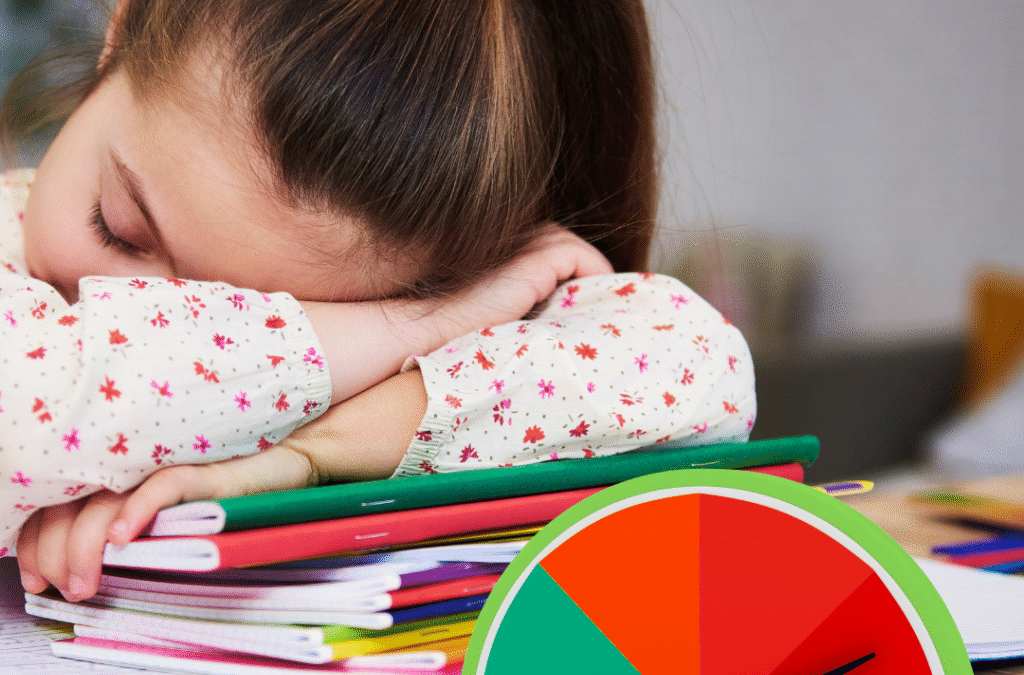Over the years, I’ve seen all kinds of diets that supposedly cure ADHD or autism. First, let me say that they are wrong. Neurodiversity means that you are different on a genetic level. Your brain works differently than a neurotypical person’s. There is no diet that will make you have a neurotypical brain. However, I do think there is a reason these diets get so much attention, and some of them make some good points.
Artificial Colors, Flavors, and Additives
The biggest piece of advice I have seen for curing your child’s neurodiversity is to cut out artificial food dyes, flavors, and additives. Honestly, I agree that you should remove those things from your child’s diet where and when you can. There is a significant body of research that indicates that those things, especially artificial colors, can cause an increase in behavioral problems and a decrease in the ability to sit still and focus.
My experience as a mom is that my neurodiverse kids appear to respond more strongly to things like artificial colors than typical kids. For my kids, the responses have ranged from meltdowns with screaming and crying to staring into the distance with no awareness of what was going on around them. Different dyes and additives created different responses as well as differences between children.
Ultimately, these things were banned in my home for a long time. Toddlers and preschoolers often struggle to control themselves. Adding a chemical to the mix is honestly cruel in my opinion. At a stage when kids want to learn self-control, it is important to not undermine that with diet choices that make it harder for them.
Now that my children are teenagers and understand their bodies better and can control their responses better, they are allowed, on occasion, to have artificial colors and such. I don’t want my kids to be away at college and discover that a package of candy makes them feel drugged. Or even worse, assume this is an allergy they outgrew and fail a final because they drank something bright red on the way to class.
Interestingly, there are many sources of food dyes, both natural and artificial. I’ve seen some cereal dyed with beet juice recently, which seems like a much safer choice. I love it when food is dyed with juice, it may even increase vitamins and minerals in the foods!
However, one of my kids recently found candy colored with insect shells, and one of my kids had an allergic reaction to that candy. That food dye would be considered “natural,” as it came from an insect, but it still wasn’t safe for us. I wish we could all be happy with the colors that food naturally comes in. But until then, I have to make sure my kids know to read labels and check in with themselves when eating certain foods.
Cassin and Gluten
I’ve also seen various diets that eliminate dairy and wheat that claim to cure autism. That’s right, no more bread or milk, staples of many American diets. And parents are on those websites saying it worked for their child. They were “cured” by a diet change. So, what do I think is going on there? It isn’t that I think the parents are lying, but they are also not correct about a dietary cure. 
There is a large body of research that indicates that children with autism are more than twice as likely as a “typical” child to have food allergies. Dairy and wheat, or gluten, are two of the 9 most common allergens. Constantly eating foods you are allergic to can cause inflammation, gut issues, and a range of health problems. An inflamed gut can struggle to absorb nutrients and leave a person vitamin deficient even if they are eating a varied diet.
Once you remove the allergen from the diet, the child’s gut heals. This results in better vitamin absorption and better brain function. Honestly, this may even be an oversimplification, depending on how strongly the body was reacting to the allergy. This doesn’t mean the child’s brain is no longer an autistic brain, but that their brain can function better. Their body is no longer fighting an unseen battle, so they have more resources to work with.
When the child’s body starts to heal, the child may suddenly make huge progress with self-care, talking, school work, or in therapy. I’ve not only seen this as a mother but as an OT. A few times a parent thought I was a miracle worker because I was working with a child just after allergens were removed from their diet. The child made amazing progress. While I do think I’m a good therapist, I also think I was in the right place at the right time. The child was ready to do more because of the changes the parent had made for the child’s health.
Identifying Allergens
While you can just read labels and remove artificial colors and flavors, should you also just remove dairy and gluten from your child’s diet? No. Removing a food your child isn’t allergic to can lead to a lack of necessary vitamins and minerals in the diet, especially in autistic kids who often prefer a limited diet anyway.
Doctors will often suggest trying an elimination diet and keeping records of how your child does without certain foods. While this works for some people, this method was not effective for my family. Instead, I asked our pediatrician to run blood work. Specifically, we did blood tests for celiac disease (which I had come to suspect) and an IgE blood test for food allergies. We focused on the most common allergies first. 
The IgE blood test rates the reaction to food on a scale, usually of 1-5, with one being a small, maybe not even a noticeable reaction, and five being an anaphylactic level reaction. When my oldest child was tested, she had one allergy at a three, about six foods were at a two, and a few more were rated a level one. Without the test, I honestly don’t think I could have figured out all the things we needed to take out of their diet. I would have tried them one at a time and not realized that part of the problem was that if you eat foods you are allergic to together, the reaction is bigger.
So, for example, if your child is allergic to tomatoes, mushrooms, wheat, and dairy, a mushroom pizza is going to make them very sick. However, a little bit of ketchup with their french fries might not register as a reaction, because you and your child expected the big reaction that they got from pizza. Eating four things that are each just a level two allergy at once, or eating that level 2 allergy at every meal, can lead to a much stronger reaction than if your child rarely ate that food.
Another thing to keep in mind is that the human body sometimes heals from a simple allergy, but not something more complex like celiac disease. After years of not eating tomatoes, my kid can tolerate them again in moderation. However, having celiac disease means they will need to be gluten-free for life. Gluten isn’t just in wheat, but in several grains, so we have to be careful and read labels.
At an OT conference years ago, I heard about a boy who did IgE food allergy testing. They discovered he only had a single allergy: eggs. However, he was eating eggs at every meal, every day. Once they removed the eggs from his diet, he made huge progress with his therapy and with his life skills. I mention this specifically to say that there are other food allergies that can be a problem than just gluten and dairy and not all kids have a ton of allergies. Having one doesn’t mean you have several. However, it is worth removing any food from the child’s diet that they are reacting to. Continuing to eat an allergen won’t cure the allergy.
Making Changes
If you are reading this and feeling overwhelmed that you need to change your child’s diet but don’t know where to start, let me give you some tips. I have been there. I know this can be hard.
Start slowly. If your first goal is to cut things like food dyes, just focus on that for a few weeks. Trade out your cereals and snacks. Learn to read labels. Yes, this means the grocery store may take longer, but it is good practice for step two.
If your child has six food allergies, it is okay if you can’t manage to cut them all from their diet on day one (assuming the allergies aren’t deadly). Work on cutting out one each week. Assuming you go to the grocery store weekly, this means you are just going to gradually move your diet away from the problem foods and over to ones that are safe, with each grocery trip. Yes, it gives you at least six weeks to make the change, but they were eating those allergens for years! Gradual change is better than giving up or losing your mind.
Now, sit down and make lists of meals and snacks your child currently eats that don’t include their allergies. Once you write those down, add meals that you regularly make that can be allergy-safe with some tweaks. For example, when my child was diagnosed as allergic to corn and wheat, we switched from having tacos to eating the same ingredients in a bowl without the tortilla. When I found out one of my other kids was allergic to beef and pork, we switched taco night to serve ground turkey or shredded chicken.
After you know what you were eating that can still be part of your diet, then you can start looking for new foods to add to the rotation that will be safe. For our family, this has meant adding many Asian dishes, because those are naturally free of most of the allergies my kids have. Egg rolls in a bowl, stir fry, and fried rice are now in regular rotation here.
No Easy Answers
If you were hoping to cure your child’s neurodiversity with diet changes, I’m sorry to burst your bubble. No special diet will change how your child’s brain is wired. However, I do hope you feel encouraged that diet changes can be worth making anyway. The healthier your child is, the better they will feel. The better they feel, the better their life will be.





0 Comments